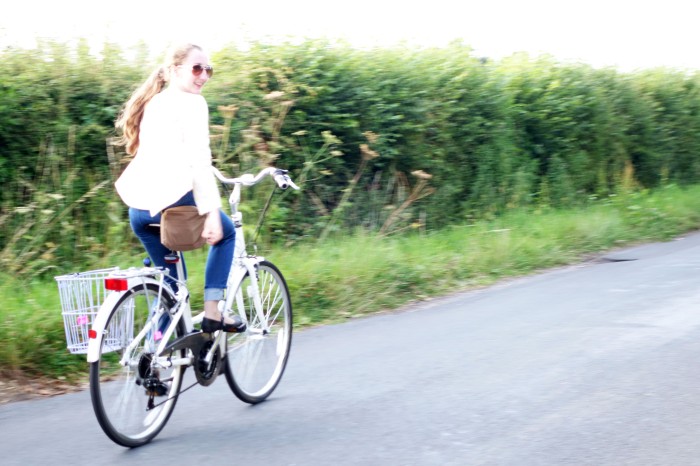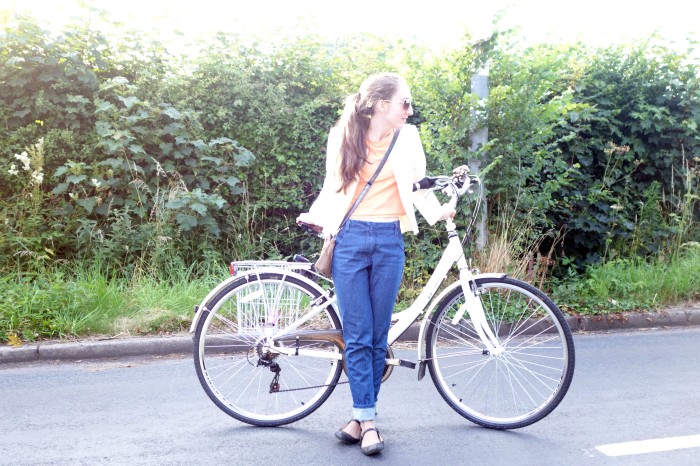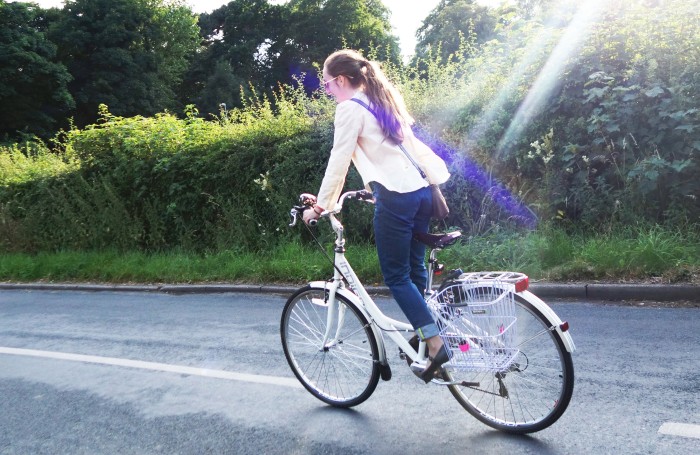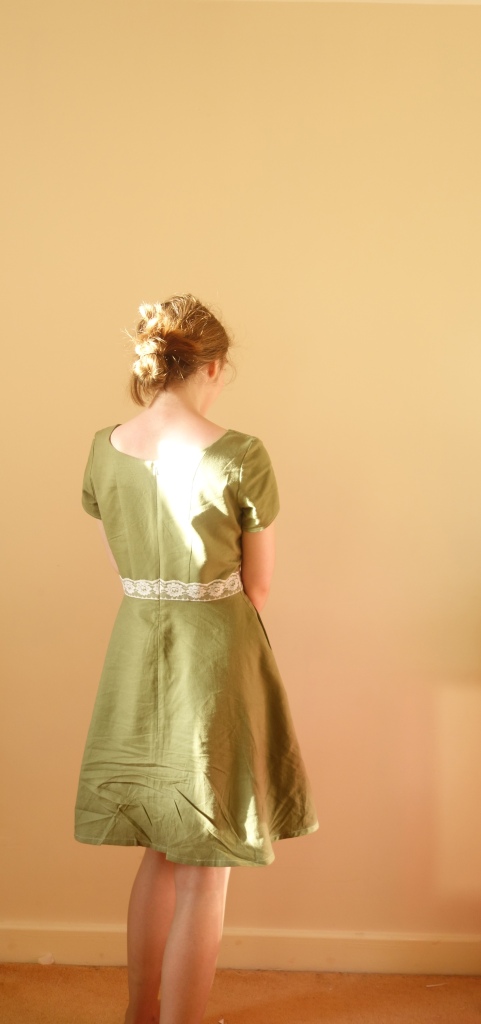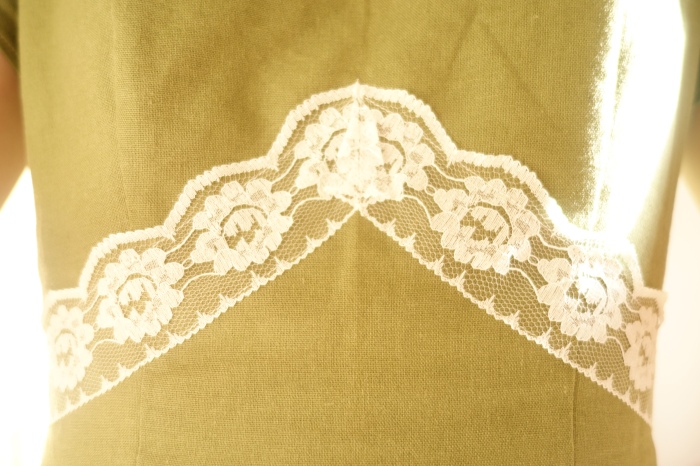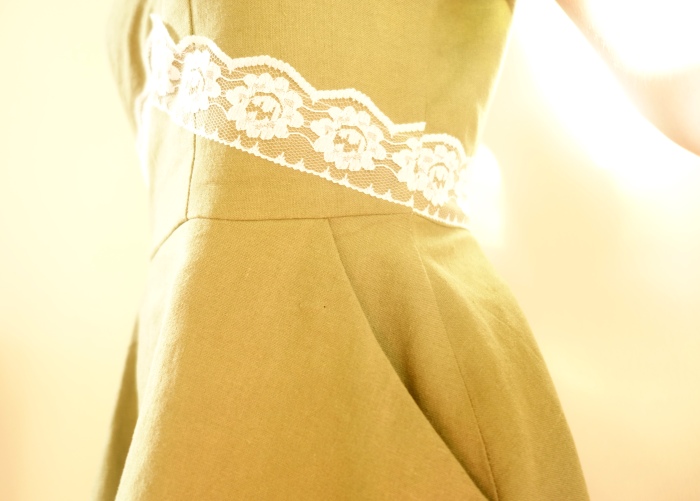My Cut21 Jeans -- The Test Ride
Last week I had a job interview at a bike shop in York and made some jeans for it. They were the Cut21 Jeans made over my jeans block, so the fit is a little different, partly because there were some changes I wanted to make, like narrowing the legs.
The jeans are getting more comfortable as I'm breaking them in. I'm used to stretch denim or skirts. Mainly skirts. They were not comfortable to begin with.
Aldrich's jeans and trouser drafts go right to the floor, which is about 8cm longer than a garment's inside legs would be, which is roughly what I have as my turn ups. It's lucky they are this length. When I drafted the pattern months ago I evidently typed in 120cm instead of 102cm, so when I printed out my pattern it were frankly too long. I shortened it and narrowed the leg to get this fit. I've corrected my Illustrator pattern now. :)
Many of the features of these jeans you have already seen on the original Cut21 jeans but, as I said, I changed a few things. Specifically:
- the narrower leg (measured round my ankle with the tape at an approximated circumference)
- no yellow hand-topstitching (no time, haven't bothered since)
- and the belt-loops are now uniform in length and made from the selvedge, which I thought was a nice touch.
The fit is pretty good (bear in mind that they are slightly crumpled here for having been worn while cycling). I can't really say whether the gusset improves comfort because I don't have any jeans without a gusset. It's not as nice as cycling in a skirt anyway.
Things I Would Like To Improve
- The back pockets are a bit far apart. I think they could do to be 1.5cm nearer to the CB seam.
- The little pocket that I was going to keep my keys in is too small for that, so it's really just for looks and I don't like that.
- I still couldn't get the facing to be perfectly aligned at the CF. You can't tell from the outside, but still...
- The waist is too low, and I think it stretched a bit during sewing. I suppose that is why they fuse waistbands in RTW jeans. I didn't do a higher back waistline either, so the whole waistline needs redesigning if I'm to make another pair.
- The shape on the front waistline detail is not perfectly round.
Thinks I'm pleased with
- Not one pin was used to sew these! (I've given up pins for sewing lately; I don't need them).
- RTW fly front zip like in my brother's jeans (slightly different though as they use a felling attachment and make their patterns accordingly in RTW; you work with what you have)
- The fit of the legs. It reminds me of Hiut denim (great company; I've never bought anything from them because I make my own, but they look good!)
- The fit on the crutch -- no monobutt here!
- They get more comfortable the more I wear them
- They're real denim, not stretch stuff. It's so nice and the perfect step between weighty denim and soft denim, which is nice for women's wear. It got it from Merchant & Mills.
So they are my Cut21 jeans 2.0. They're going to look so cool with my Cut21 jacket (I'm working on a hack for that now)!
If you could make some dream jeans, what would they be like? Any special features? A particular fabric? Please do share in the comments below!
Sabrina
Labels: Cut21, gusset, jeans, pattern cutting, patternmaking

